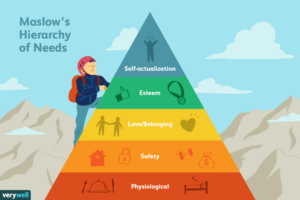
As an effective leader, a key pillar of leadership is a dedicated focus on employee engagement. An employee’s engagement to their job, their manager, and to their organization are directly related to the success of both the employee and the company as a whole. So, what is employee engagement and why is it important to your effectiveness as a leader? Kevin Kruse described employee engagement as:
“the emotional commitment an employee has to the organization and its goals, resulting in the use of discretionary effort” (Kruse, 2012).
Think of it this way—an employee can get by with say 70% of their capable output. The extent to which they invest more energy hinges on their willingness to invest the discretionary effort.
Discretionary Effort
It is this “discretionary effort” that answers the why question. This is seen in better customer service, increased productivity, improved safety on the job, higher employee retention, and many other valuable attributes.
The direct results of these “discretionary efforts” have been shown in study after study to have a positive correlation with customer satisfaction, sales, profit, and shareholder value.
The 4 Basic Psychological Needs

In order to understand how to successfully engage people, you need to start with what motivates us as humans in the first place. There are four basic psychological needs that we strive to have met (Smith, 1994).
- The need to live.
- The need to love and be loved.
- The need to feel important.
- The need for a variety of experiences
All of us can relate to how these four basic needs impact us in our daily decisions. As a leader working across the appropriate departments in your organization, you need to build an environment equipped to meet those needs for your employees because those factors drive engagement and retention.
Creating the Environment
In order to create an emotional commitment in the employee by driving pride, inspiration, and meaning from their role, this environment should be transparent and trustworthy. It is also imperative to establish a rational commitment, which includes meeting their financial, development, and professional needs.
Pay most attention to those elements that create an emotional commitment because those are four times as impactful on increasing the desired “discretionary efforts,” as opposed to the rational commitment influencers.
Manager and Employee Relationship
The most influential person in employee engagement is the employee’s direct manager (DM). DMs influence more than 70% of the activities that create the environment needed for emotional and rational commitments from the employees. The relationship between an employee and his/her DM makes coaching an effective way to improve engagement, enhance the work environment, build trust, and reduce turnover.
Managers can have a profound impact on the workplace by effectively coaching their direct reports and consistently acknowledging their work, which in turn means employees are more likely to stay at a company.
When employees fully understand their roles and their contributions to the company’s big picture objectives through continued communication of the mission, vision, values, and culture of an organization, it helps further creating that emotional commitment.
Onboarding

It is also time to change the assumptions that employee engagement is abstract or difficult to measure. There is concrete evidence on both how to do it and the benefits that are gained. Leaders focused on employee engagement understand that it is not a one-day activity or just for longtime employees.
Employee engagement should start from the time of hiring with an engaged and directed onboarding plan and move into a long-term engagement and retention plan. Providing a detailed onboarding plan that includes clear guidelines of their responsibilities, appropriate training, alignment on goals, team building relationships, and time with their manager will show new employees that they are valued, thus fulfilling those basic psychological needs, which in turn increases their performance.
Continuing these types of commitments to your new employees throughout the first year of onboarding is important but often overlooked. After the first year of employment and into the retention stage, you need to plan for future development so the employee can see a career with the company. This will create a strong foundation for employee engagement.
The Value of Employee Engagement
A practical way to think about the value of employee engagement and retention is that it can cost more than two times an employees’ salary to replace them, not even counting the lost knowledge that employees take with them when they leave. Wouldn’t it be a great outcome as a leader to avoid those costs by acting in ways that are important and beneficial to our employees, ultimately leading to happier customers resulting in higher sales and profits for our companies?
Reference:
Hyrum W. Smith, The 10 Natural Laws of Successful Time and Life Management, (New York, New York: Warner Books, 1994), 132.
Kruze, K.(2012, September 18). Employee Engagement Research (Master List of 32 Findings)[Web log post]. Retrieved June 3, 2019, from https://www.kevinkruse.com/blog/
For the Faith-Based:
Many Christians meander through their work environment looking for a way to connect their work and faith. If you look closely enough, there are a limitless number of activities that we can relate to as Christians in our work environment, including employee engagement. In fact, the Bible teaches us what it means to be both an employee and a manager.
These two groups in the Bible are referred to as slaves and masters. In Ephesians 6:7, the slaves are told to serve wholeheartedly as if they were serving the Lord, not men. In Ephesians 6:9, the masters are told to treat their slave in the same way. They are reminded that they too have a Master in Heaven and to treat the slaves with respect and love.
In other words, you must meet your slaves’ (employees) basic psychological needs; 1) the need to live, 2) the need to love and be loved, 3) the need to feel important, and 4) the need for a variety of experiences. It is necessary to engage with the whole person. Treat your employees with respect, as valuable individuals. Take the time to develop relationships and show the employees how they are needed and what their possibilities are. Give them the freedom to be creative, and feel like they are contributing in a way that makes them feel accountable and that they take pride in their work.

Jesus started His own organization with just a few men He called to be His disciples. He led these twelve men in such a way that they were engaged to the point of an emotional commitment where they would give their extra effort. He coached them, managed them, gave them feedback when they were doing right or wrong, and at the appropriate times He told them what their mission was. In John 15:15 Jesus says, “I no longer call you servants, because a servant does not know his master’s business. Instead, I have called you friends, for everything that I learned from my Father I have made known to you.” Jesus exemplified the principle of employee engagement by sharing with His disciples in a transparent way, thus creating that emotional commitment necessary for these men to be all in.
As Christians in today’s world, it may look like our work culture and faith can’t come together. However, the Bible is full of examples of how we can foster an environment that results in engaged employees, who give that extra discretionary effort that produces the fruit of success in the lives of each person and the company as a whole.
For more examples of real-life leaders integrating their faith with where God has placed them in the marketplace, consider reading: Bold Leadership – Biblical Principles for Marketplace Impact. You can find it on Amazon here.